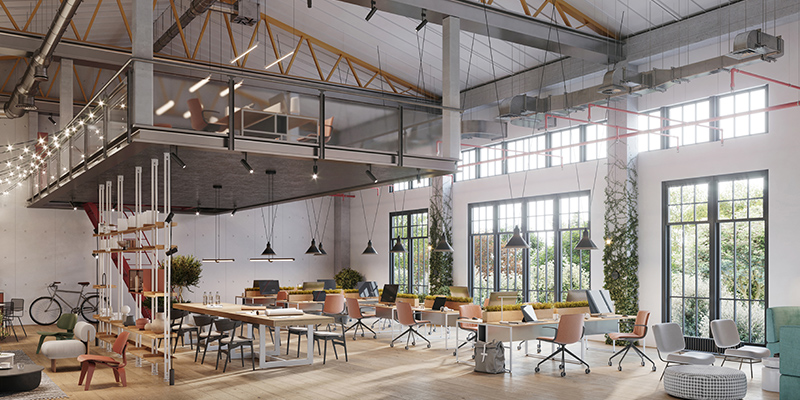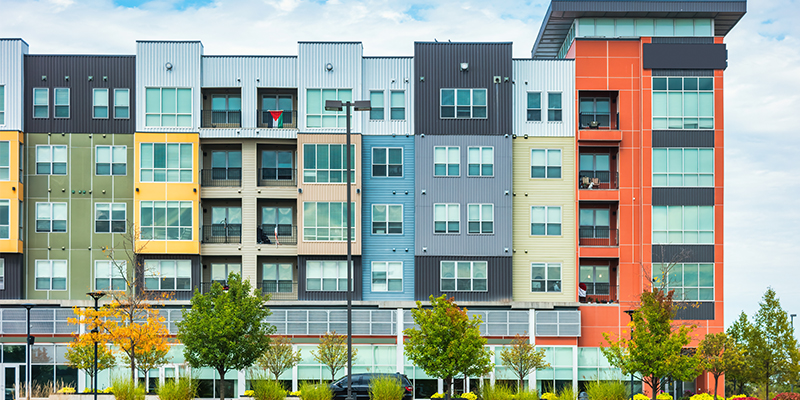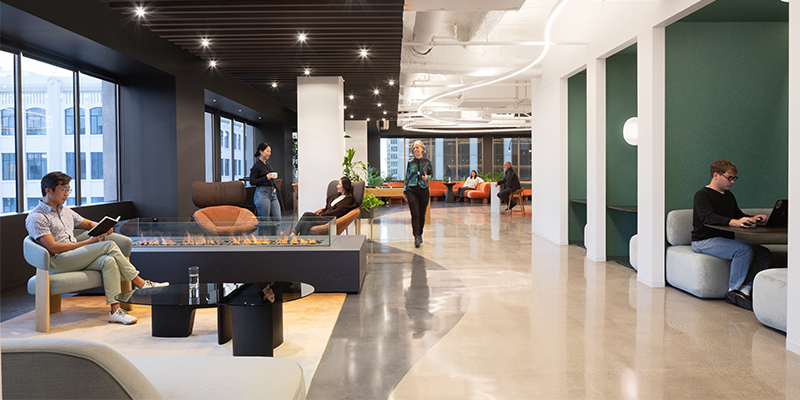Although many in the industry had assumed that the office market would stabilize in 2022 – and perhaps even begin to recover pandemic losses – this stabilization did not occur. Rather, wider economic changes; repeated interest rate increases by the Federal Reserve; the further establishment of work-from-home and remote office arrangements; and increasing numbers of office footprint reductions by businesses caused vacancy rates to continue to rise throughout the year. At the same time, rent growth remained patchy.
Listing Rates Show Significant Growth, But Only in Select Markets
Large segments of the office-using sector have adopted remote and hybrid work (at least in part) since the start of the pandemic. Accordingly, the demand for offices has decreased in most markets. In addition, many businesses have also reduced the size of their offices, while others have firm intentions to do the same in the near future. As a result, the national vacancy rate – which reached 16.3% in November – was 150 basis points (bps) higher than it was in October 2021, according to the most recent CommercialEdge report.
In fact, during the last 12 months, vacancy rates increased in 86 of the 120 areas monitored by CommercialEdge, including 22 of the 25 most significant markets. Specifically, the leading U.S. office markets with the largest vacancy rate increases were San Francisco (+390 bps) and Portland, Oregon (+400 bps).
Sunbelt Expands as Businesses Look for Headquarter Locations
At the end of October, 135.5 million square feet of office space nationwide – or 2.1% of the national stock – was under development. Meanwhile, another 6.1% was being planned, but it’s unclear if these projects will actually happen given the rising cost of building supplies; supply-chain issues; the large hikes in interest rates by the Fed; the increasing cost and difficulty of financing; and a possible recession.
And, although office construction hasn’t increased to pre-pandemic levels in 30 months, it has continued. For instance, 80% of the present building pipeline is made up of projects that began after April 2020. That’s because the vast majority of office projects that started before the pandemic have already been completed. As such, companies moving to or expanding into Sunbelt areas, as well as occupiers’ flight to quality, account for a large portion of the present national construction pipeline. More precisely, of the 135.5 million square feet of office space currently being built, 125.7 million square feet are Class A and A+ developments, whereas fewer than 10 million square feet are occupied by Class B spaces.
National Sales Volume Exceeds $75 Billion in Transactions
Between Jan. 1 and Oct. 31, CommercialEdge registered $76.34 billion in office transactions. Manhattan sales made up $5.56 billion of this total, while the San Francisco Bay Area, Boston, New Jersey and Washington, D.C., markets each saw sales of roughly $4.1 billion.
Sales in four more markets reached $3 billion or more, with some of those predicted to reach $4 billion before the end of the year. Dallas is one of them, with $3.94 billion in total sales as of the end of October. Notably, only four of the top 25 office markets in the nation had sales below $1 billion.
Workers in Office Spaces
The number of jobs in industries that use offices increased by 46,000 in October, up 3.6% compared to the previous 12 months, according to the Bureau of Labor Statistics. In total, office-using industries have generated 910,000 new jobs so far this year.
In particular, wage growth in the financial activities industry has slowed during the last 18 months after rising quickly in the first half of 2021 and reaching a peak of 7.8% year-over-year in March. In October, the financial activities sector’s average compensation increased barely 3.8% from the previous year. This was less than the 4.7% pay growth for the entire labor market as a whole, as well as the 6.4% and 5.0% growth rates for the information sector and professional and business services, respectively, both of which are office-using sectors.
Furthermore, the consumer price index has been above 8.0% for many months and, despite recent advances, inflation-adjusted salaries have dropped this year. Consequently, wage growth is anticipated to continue in the near future across all sectors of the economy. Therefore, further increases are necessary if firms want to recruit and retain talent in a tight labor market.
Rate Increases Present Another Challenge for Office Market
In a bid to combat inflation levels not seen in nearly 40 years, the Federal Reserve has increased interest rates by 375 bps since March. Likewise, rate increases have added a new obstacle that will impede the flow of new supply and transactional deals – this in an office market that’s already struggling with the negative effects of remote work and corporate downsizing.
At the same time, deals for new office properties are becoming increasingly difficult to make a profit on because of rising financing expenses, fluctuating material pricing and labor shortages. Granted, pre-leased or build-to-suit properties will still be eligible for finance, but not many others. So, as the market adapts to the new circumstances in 2023, CommercialEdge anticipates that some office projects will be put on hold or abandoned completely. Some developers might even consider other options for the area they’re building in. For example, CIM Group initially intended to build an office skyscraper in downtown Oakland, but recently submitted an application to build a 46-story apartment complex instead.








